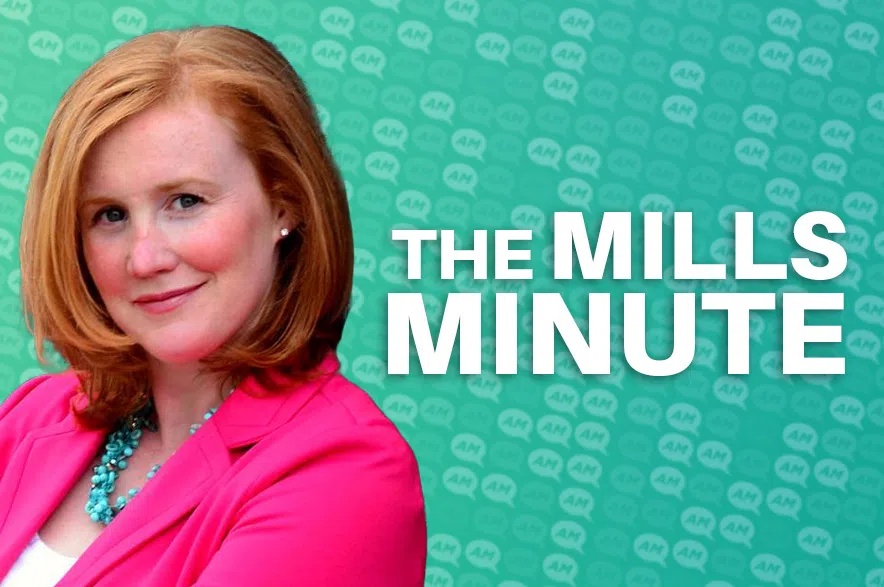PERDUE, SASK. — Just a half-hour drive from the hum of city life, tucked amid fields of wheat, there’s a little farm that promises something a bit more whimsical than your average rural escape.
Prairie Fire Alpacas, run by Karen Pashovitz, isn’t your typical farm. It’s a fuzzy, friendly haven where alpacas steal the show and visitors leave with armfuls of buttery-soft fibre goods.
Listen to the story on Behind the Headlines:
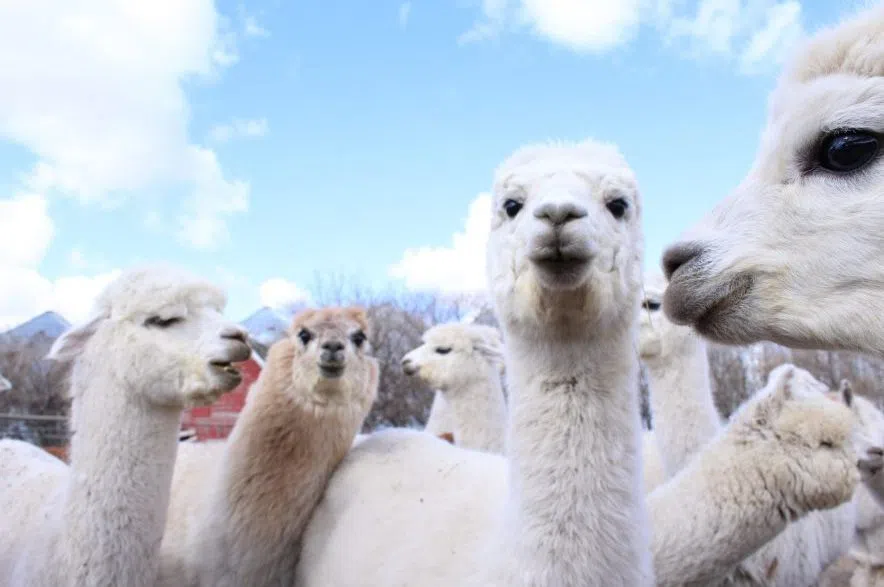
Pashovitz has her alpacas sheared just before summer each year. “They have to be sheared, otherwise they’re too hot for the summer, and then their fleece would be too long next year to do anything with,” she explained. (Brittany Caffet/650 CKOM)
Getting into the alpaca business wasn’t always the plan. Pashovitz and her family have been farming grain for over 25 years — wheat, oats, canola, the usual staples of prairie agriculture.
But then came a desire to try something different and a little more fun. That’s when the alpacas entered the picture.
Read More:
- Explore Freba Pottery: Saskatchewan’s honour-system shop on Hwy 16
- From seed to stem: A Sask. flower farmer’s spring frenzy begins
- A mother’s miracle: Ferland’s journey from preemie to pro football
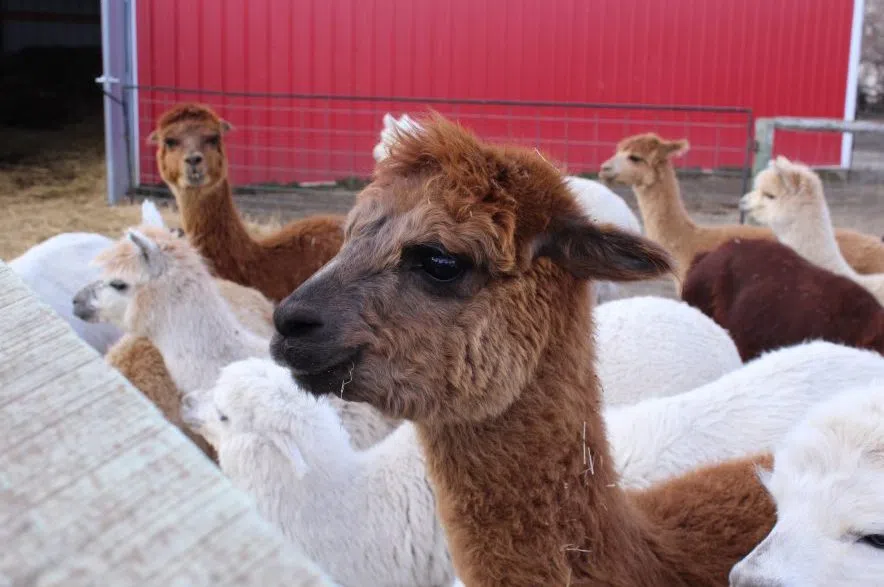
Alpacas and llamas are like cousins — they’re both part of the camel family. Camels are their distant desert relatives, kind of like the weird uncle who lives far away but still shows up in the family tree. (Brittany Caffet/650 CKOM)
At first, the goal was simple: grow a small herd and maybe win a ribbon or two.
“Which we did,” Pashovitz said with a grin. “Way back in 2010. Supreme Champion. It was just like I won a beauty pageant. It was so awesome.”
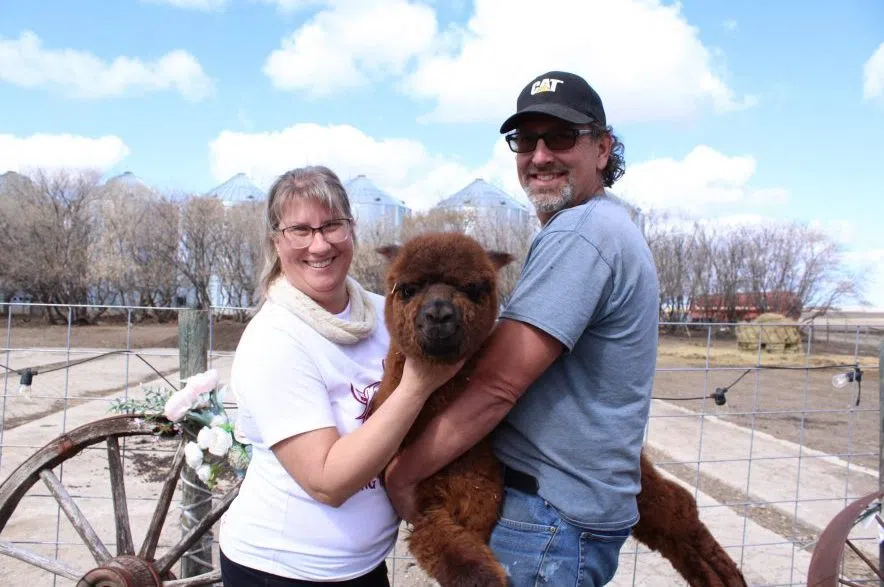
Karen Pashovitz and her husband have been farming grain for 25 years. She said that while grain farming is the primary function of their farm, the alpacas are what make the job fun. (Brittany Caffet/650 CKOM)
If you’ve never seen an alpaca up close, imagine a creature somewhere between a llama and a stuffed toy — big eyes, long lashes, and a face that always looks vaguely amused.
“Some of them are pretty funny, looking,” Pashovitz said fondly. “I take pictures of them with sunglasses on all the time. That’s my advertising. They’re just like teddy bears! Like, who doesn’t want to hug an alpaca?”
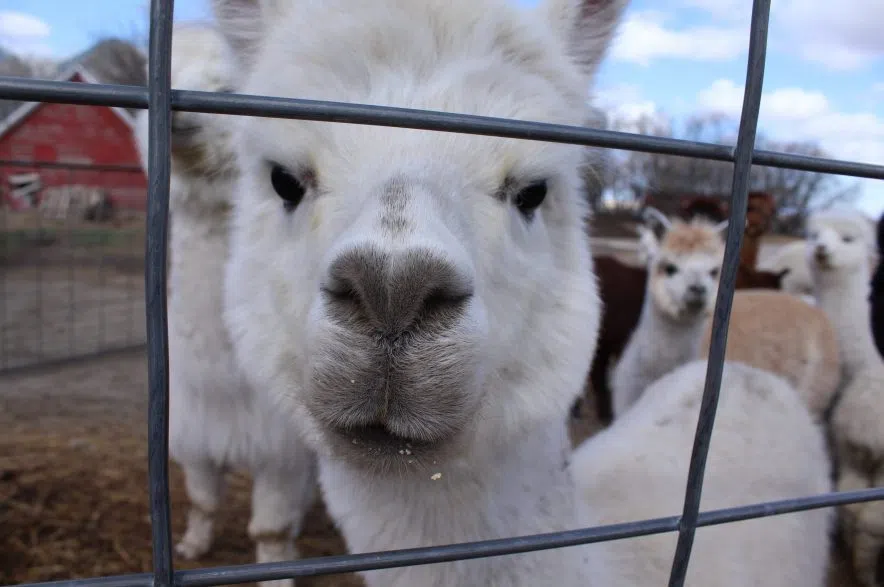
Pashovitz describes her alpacas as calm, docile creatures. “They’re actually quite therapeutic,” she said. “Just hanging out with them, it’s quite relaxing.” (Brittany Caffet/650 CKOM)
Not all the alpacas have names — yet.
“Probably about half,” Pashovitz admitted. “My favourite right now is this brown guy with a white face. He’s a cutie pie.”
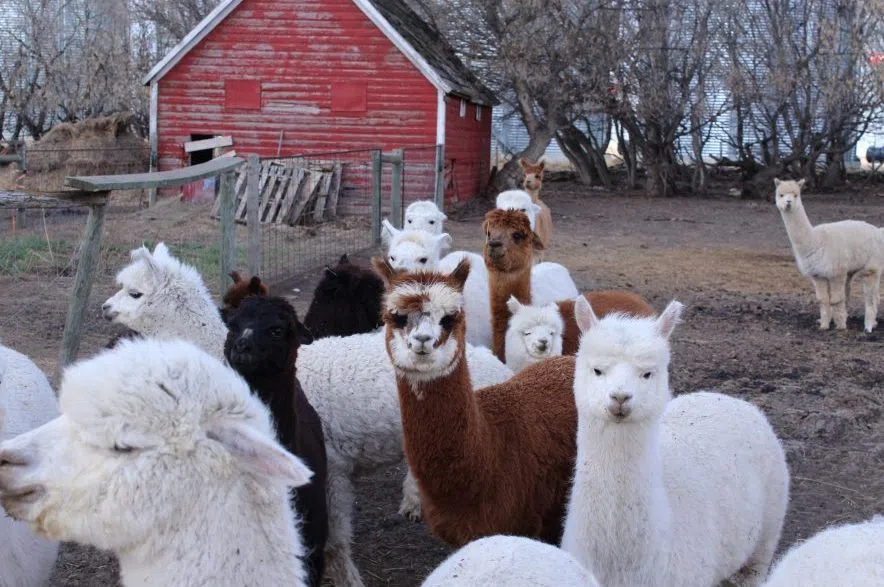
The brown alpaca with a white face is Pashovitz’s current favourite in her herd. “He’s a cutie pie,” she said of the quirky critter. (Brittany Caffet/650 CKOM)
And the babies?
“Always the cutest. Always.”
Despite their charm, alpacas aren’t show-offs. Pashovitz describes them as calm and curious, but trepidatious.
“They’ll come up to the pen and check you out, but they’re shy. And they do spit, mostly at each other for food. I get caught in the crossfire sometimes when I’m feeding them!”
Even with spit flying, visitors often remark on how relaxing it feels to be around the gentle creatures. Some stay longer than they planned, and others don’t want to leave at all.
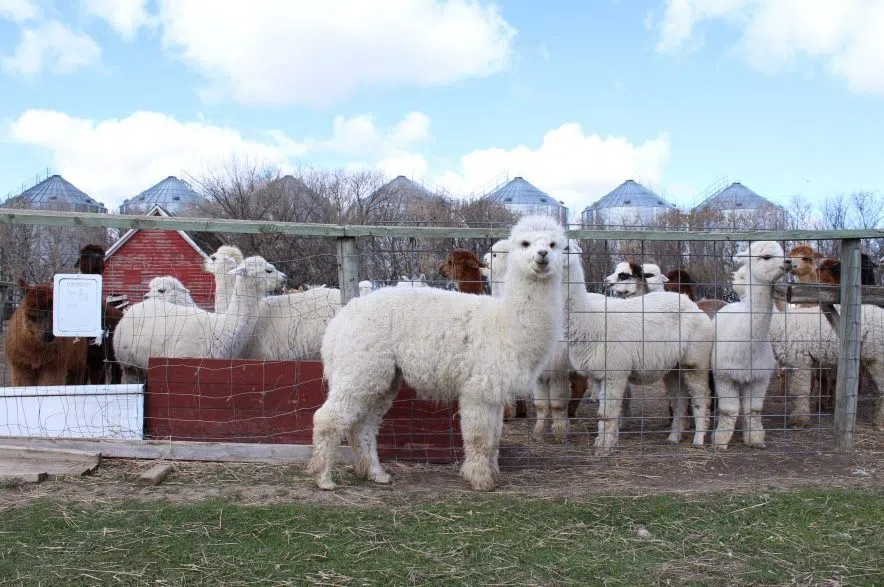
While alpaca fibre may look similar to sheep’s wool to the untrained eye, Pashovitz said the two materials are actually quite different. “Alpaca is warmer than wool, and it wicks the moisture away,” she explained. “It is hypoallergenic, and it doesn’t have the lanolin oil in it like wool does.” (Brittany Caffet/650 CKOM)
Each spring, the alpacas are sheared, their fleeces carefully sorted and cleaned by hand. Pashovitz picks out every bit of straw and burr before sending it off to Canadian mills.
“The blanket area — that’s the prime fleece,” she explained. “It’s all about uniform length and crimp.”
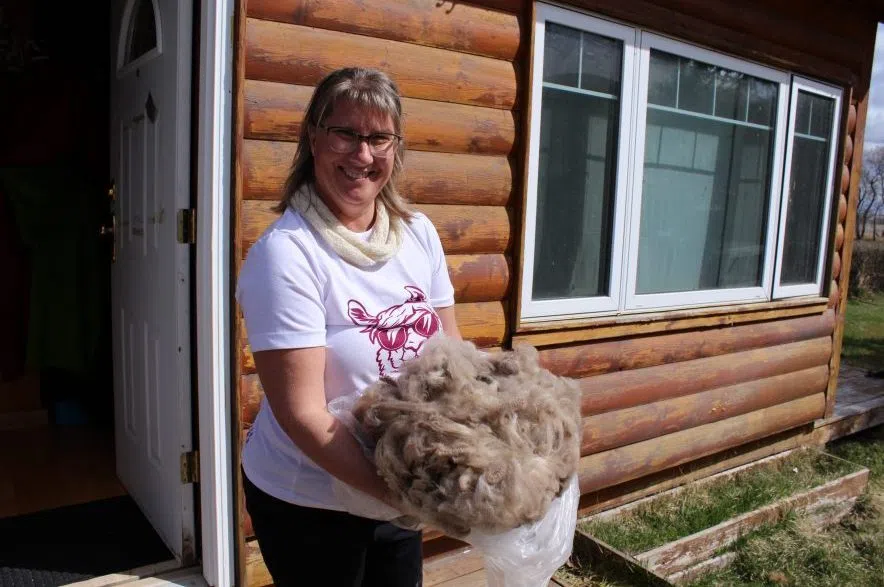
Pashovitz’s alpacas are sheared once a year. She then carefully sorts the fiber by crimp length and colour before sending it to a mill to be processed. (Brittany Caffet/650 CKOM)
The best of it becomes soft yarns and shawls. The coarser fibres find their way into dryer balls, insoles or even nesting material for birds.
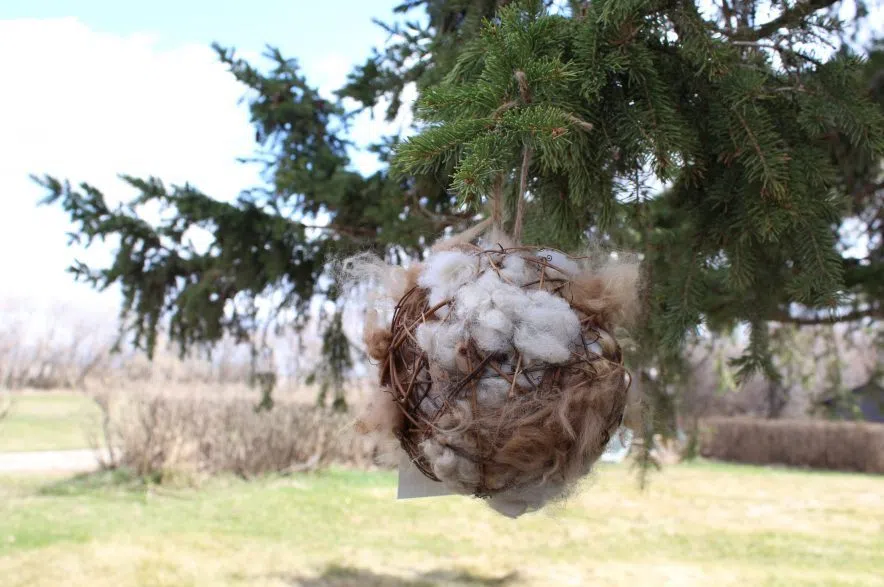
Pashovitz takes pride in the fact that there is very little waste when it comes to the fibre from her alpacas. Even the coarse fibres can be used as nesting material for birds. (Brittany Caffet/650 CKOM)
“Nothing really goes to waste,” Pashovitz said proudly.
The result is a little on-farm shop brimming with hand-knit mittens, cozy toques and warm socks, all made from her own animals’ fibre.
Many of the items are knit by local hands — women Pashovitz knows, who are part of the community’s fabric, just like the alpacas themselves.
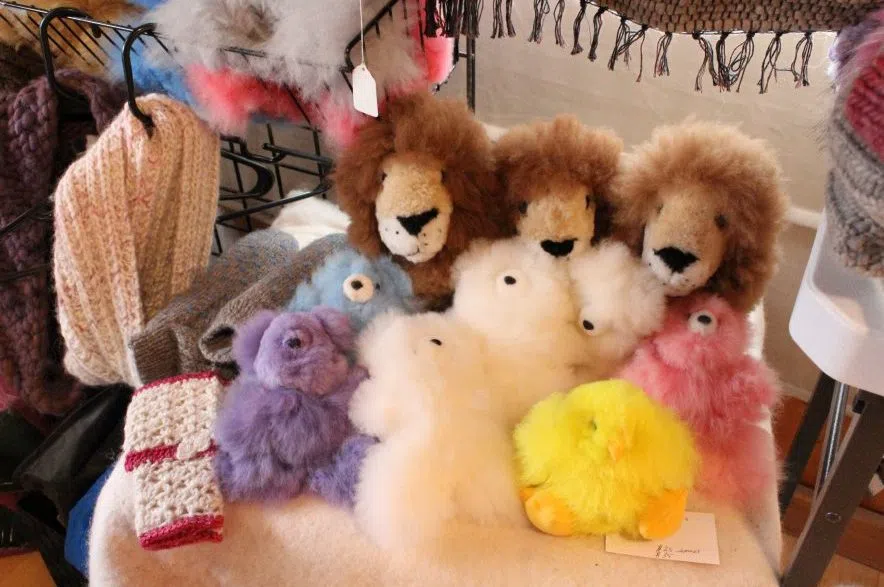
The fibre from alpacas can be used to make a huge variety of items, including teddy bears. (Brittany Caffet/650 CKOM)
And this place isn’t just for shopping. Prairie Fire also opens its gates to visitors.
“People just love the alpacas,” Pashovitz said. “They’re a unique animal that you don’t just see anywhere, unless you come to an alpaca farm like this or unless you go to an alpaca show. They’re a lot of fun.”
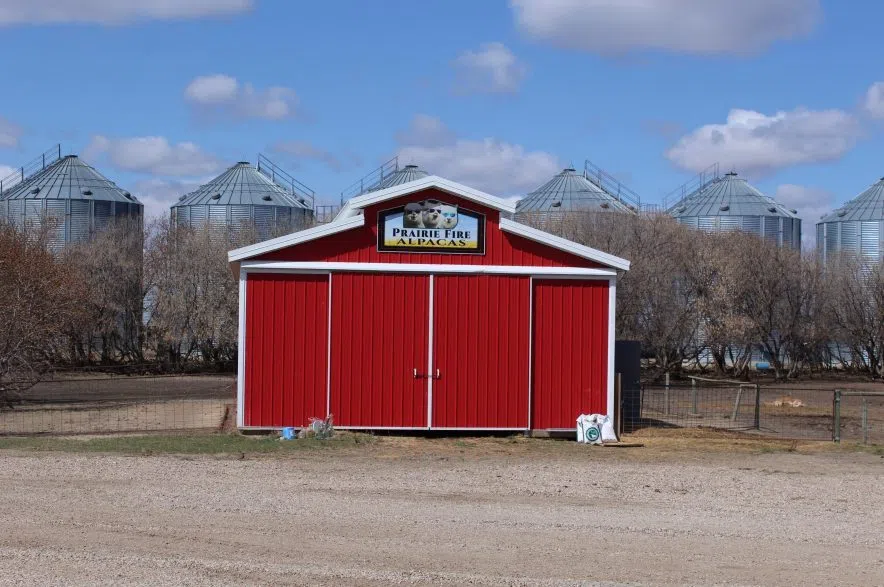
Pashovitz gets a kick out of taking photos of her alpacas wearing sunglasses. She uses them for all of her advertising, even putting a huge sign up on her barn. (Brittany Caffet/650 CKOM)
In July, the farm becomes one stop on the Prairie Art Road Trip — a rural art crawl linking the Pashovitz farm with nearby studios and artists.
Prairie Fire Alpacas might have started as a sideline between seeding and harvest, but for Pashovitz, it’s become something more.
“The alpacas are the fun part of farming for me. We grain farm, but the alpacas are definitely makes what makes it so much fun,” she said with a smile.
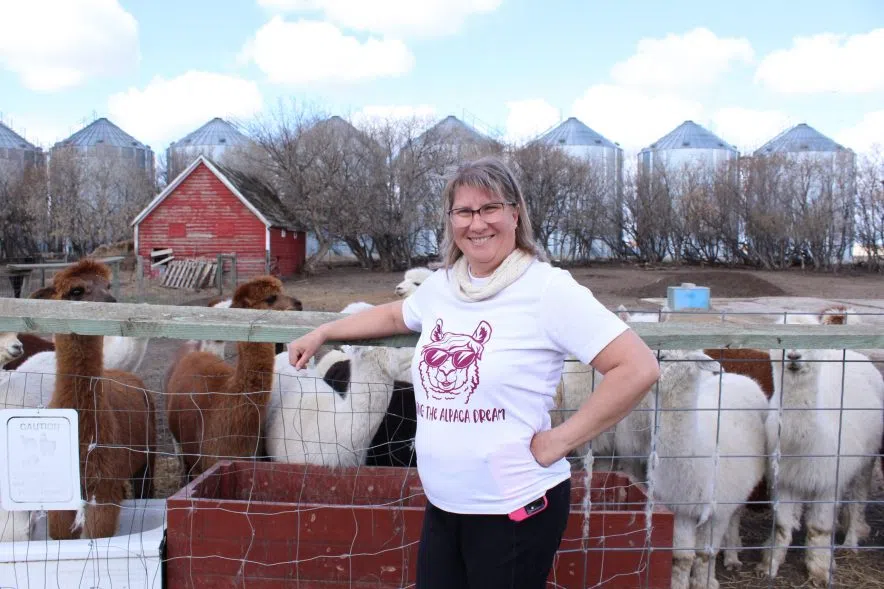
Karen Pashovitz said the mills that process the fibre from her alpacas are all located in Canada, making her products completely Canadian-made. (Brittany Caffet/650 CKOM)







